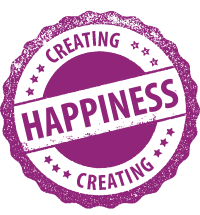Let’s talk about your lovely brain. In order to have a good quality of life, you need to have healthy thinking patterns and understand that a thought and thinking are two different things, and that your brain does not come up with truth, but an array of random stories.
Many of us accept any story (aka thought, I will use both terms interchangeably) that our brain comes up with as truth, hook into it and start an internal dialogue with it. This can lead to a lot of misery. For example, if a self-defeating story like, “I am not good enough”, or, “I am stupid” pops up, understand that this is not the truth, it is just a story. Most likely one that somebody told you a long time ago and that you have internalized by now.
Our brain cannot tolerate a vacuum, and it will always come up with new thoughts. It comes up with all kinds of stories trying to make sense of the world. Some of them are useful, others not so much. Your job is to teach your brain which stories work for you, and which stories don’t. You can teach your brain that by only responding to productive thoughts, and learning to let unproductive thoughts come and go without hooking into them.
This way you become a proactive thinker and start leading your brain instead of being led by it. You learn to distinguish between your initial thought and your thinking process that follows. Your initial thought you have no control over. However, after that, how you respond to that first thought, your thinking process, you have an enormous amount of control over.
The following quote is frequently attributed to Victor Frankl, who is the founder of logotherapy. It says, “Between stimulus and response there is a space, and in that space lies our growth and our freedom.” This quote summarizes perfectly the power of moving away from default thinking to a proactive thinking style.
Your first thought is the stimulus and before you allow yourself to automatically hook into that thought, look for the space in between the stimulus and your response. You can use that space to make a conscious decision and decide if this is a useful thought, or if it is better to let the thought pass by.
For example, if your first thought is, “I am a loser”. Refrain from responding automatically to this thought, and instead, look for the space that follows it. Then, use that space to make a wise decision, and ask yourself if it is helpful to respond to this toxic thought, or would it be better to simply let it pass by.
Once you made the healthy choice of not responding to it, you can even go a step further and treat yourself to a kind story, like, “I do want to lose weight and be as healthy as possible, at the same time I choose to accept and love myself the way I am right now. I am ok no matter what”.
You are the master of your brain and you reinforce thoughts, being aware of it or not, all the time. You might as well be purposeful about it and create solid and positive thinking patterns for yourself.
If you are done sitting on the passenger seat with your brain running the show, and want me to lead you through a step-by-step process of taking back control, check out my blog on “The Power of Cognitive Defusion: To Let Useless Thoughts Go and Improve Mental Health”. If you are tempted to click the link right away, you can. However, you will profit most from it if you complete the exercise below beforehand.
That is, during the next week, become a compassionate, curious and non- judgmental observer of your thinking process, and notice what thoughts pop up that have a lot of emotions attached to them.
Write the thoughts down, reminding yourself that those are interesting stories and not truths, which mean nothing about you. They are just automatic brain reflexes. You can even become curious about where those thoughts come from. That is, who has said these words to you in the past?
Once you have assembled the list, you are ready to take the next step and move to my next blog on “The Power of Cognitive Defusion: To Let Useless Thoughts Go and Improve Mental Health”. I am excited and am looking forward to sharing this mental health tool with you, because I know this one is a game-changer.

This post is part of the blog series "Creating Happiness", your inspiration to promote positive change in your life.
Do you like Daniela's posts? Subscribe to her blog series:
ABOUT THE AUTHOR
Ms Daniela Beer-Becker, Psychologist
Daniela is a regular contributor to the Blake Psychology blog and author of the "Creating Happiness" series.
MORE POSTS IN THE SERIES
















